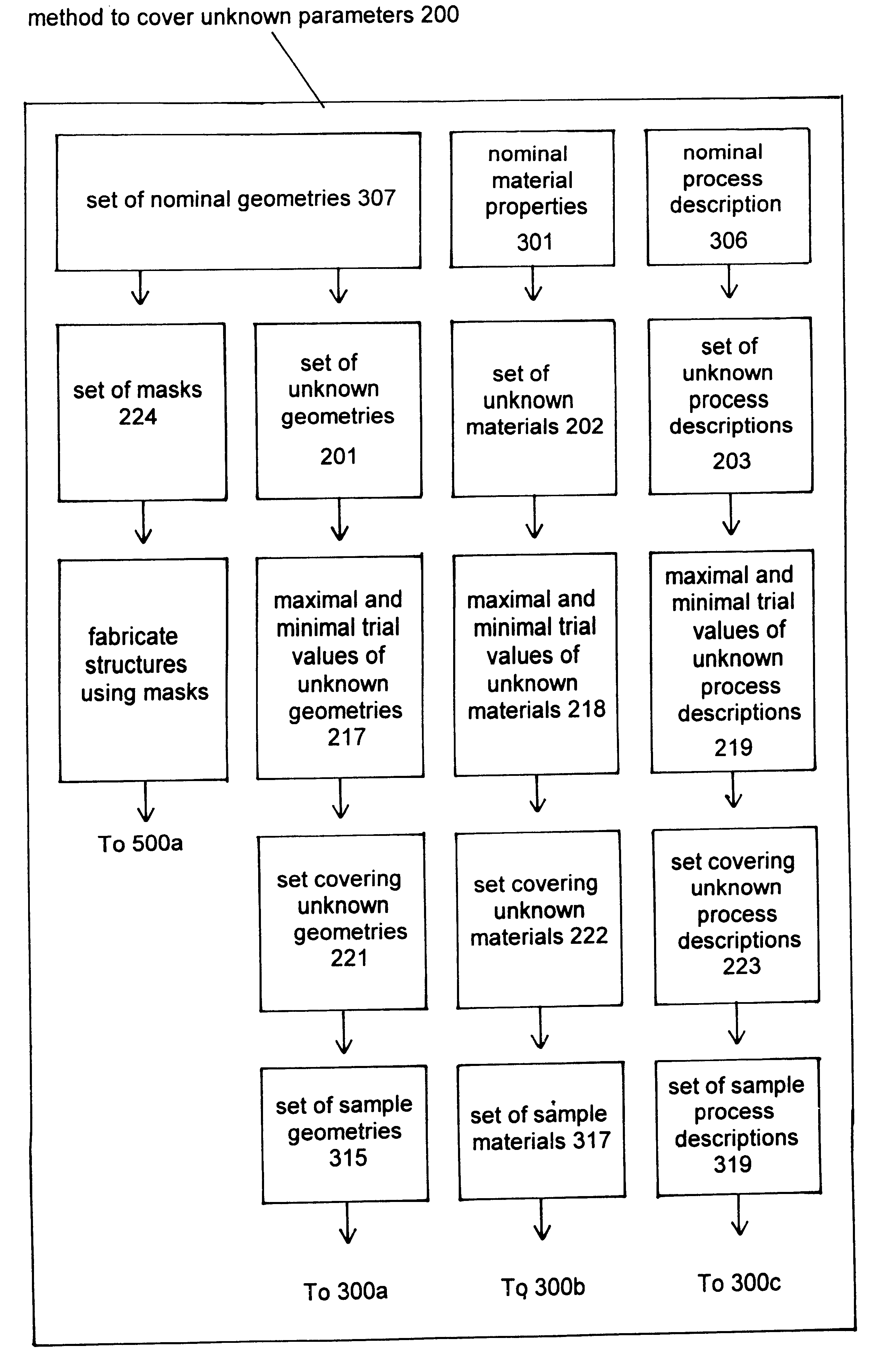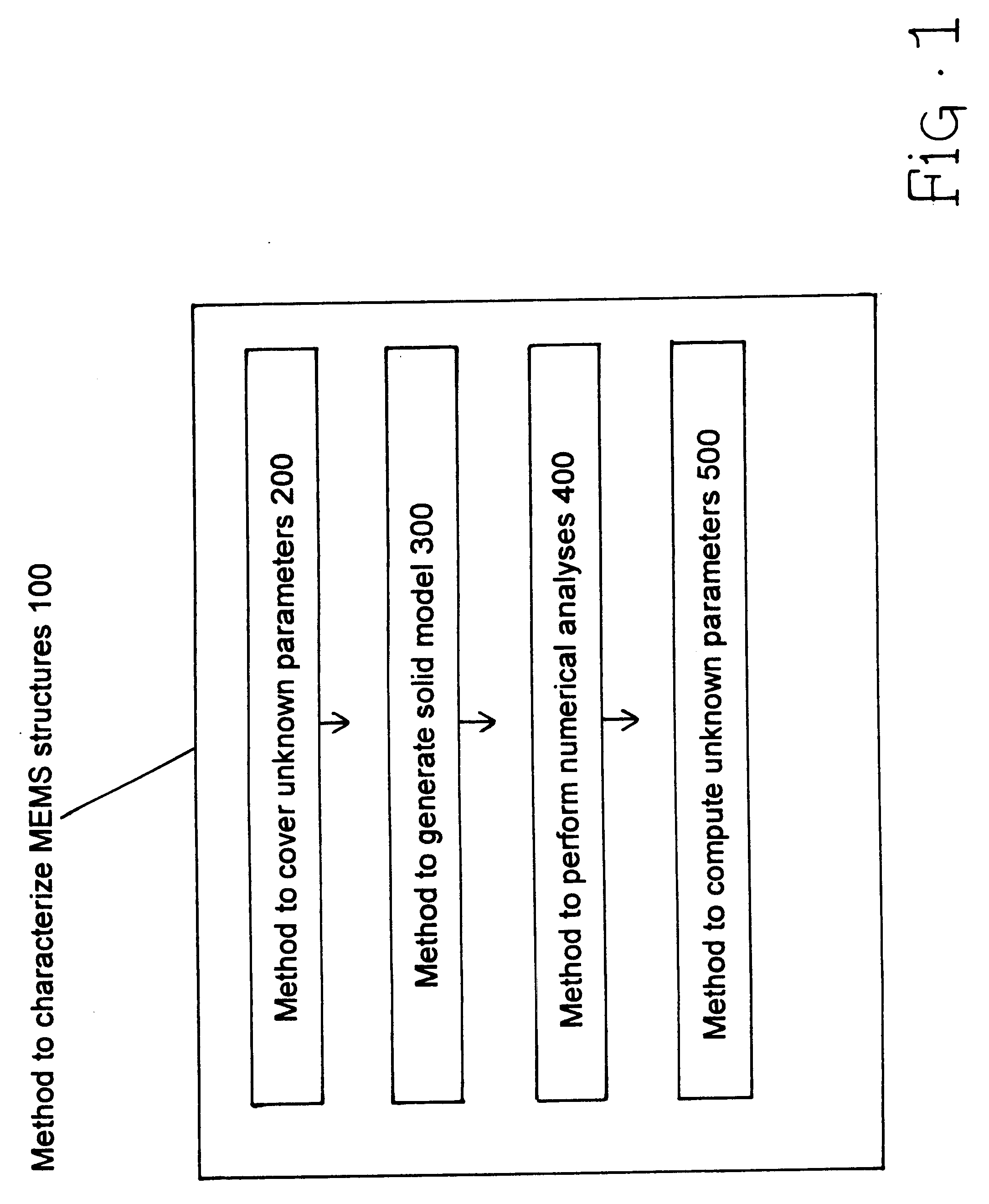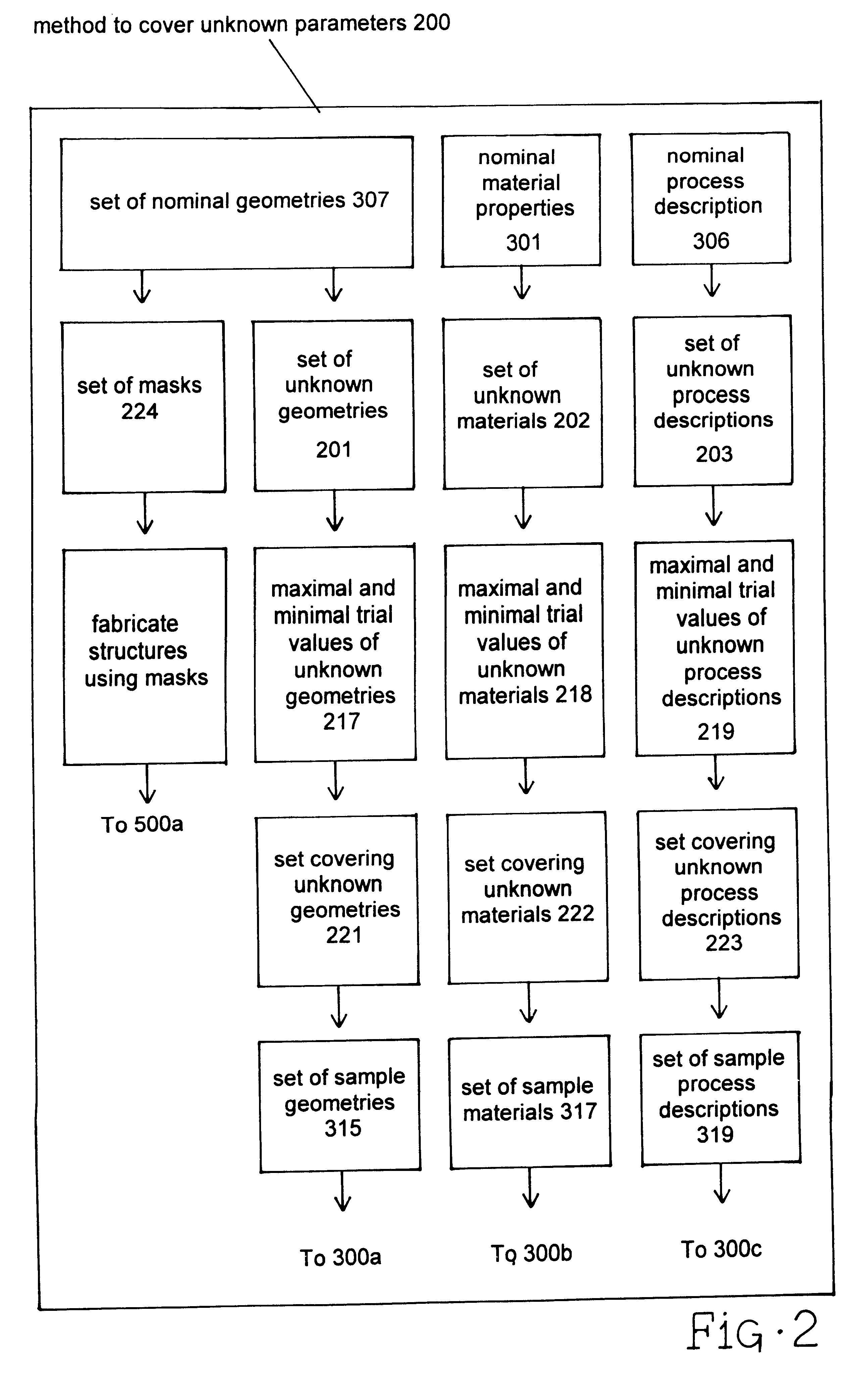Characterization of microelectromechanical structures
a microelectromechanical and structure technology, applied in the direction of mechanical measuring arrangements, instruments, and mechanical means, can solve the problems of order errors in the inferred value of material properties, adversely affecting the methods used to extract material properties of mems devices, and significant geometric dimensions in such test structures
- Summary
- Abstract
- Description
- Claims
- Application Information
AI Technical Summary
Problems solved by technology
Method used
Image
Examples
Embodiment Construction
A presently preferred embodiment of the present invention is discussed below with reference to the accompanying drawings. In the following description, numerous specific details are set forth in order to provide a thorough understanding of the presently preferred embodiment of the present invention. It will be obvious, however, to those skilled in the art that the present invention is not limited to the specific details and may be practiced with various modifications, omissions and additions thereto. For economy and clarity, similar structures are referenced throughout the drawings with the same reference numbers and in some instances, detailed depictions of well-known structures are omitted in order to avoid unnecessarily obscuring the present invention.
FIG. 1 generally illustrates a preferred method and components to characterize MEMS structures 100 according to the present invention. The preferred method incorporates four components. The first component comprises a preferred meth...
PUM
| Property | Measurement | Unit |
|---|---|---|
| Thickness | aaaaa | aaaaa |
| Structure | aaaaa | aaaaa |
| Ratio | aaaaa | aaaaa |
Abstract
Description
Claims
Application Information
 Login to View More
Login to View More - R&D
- Intellectual Property
- Life Sciences
- Materials
- Tech Scout
- Unparalleled Data Quality
- Higher Quality Content
- 60% Fewer Hallucinations
Browse by: Latest US Patents, China's latest patents, Technical Efficacy Thesaurus, Application Domain, Technology Topic, Popular Technical Reports.
© 2025 PatSnap. All rights reserved.Legal|Privacy policy|Modern Slavery Act Transparency Statement|Sitemap|About US| Contact US: help@patsnap.com



